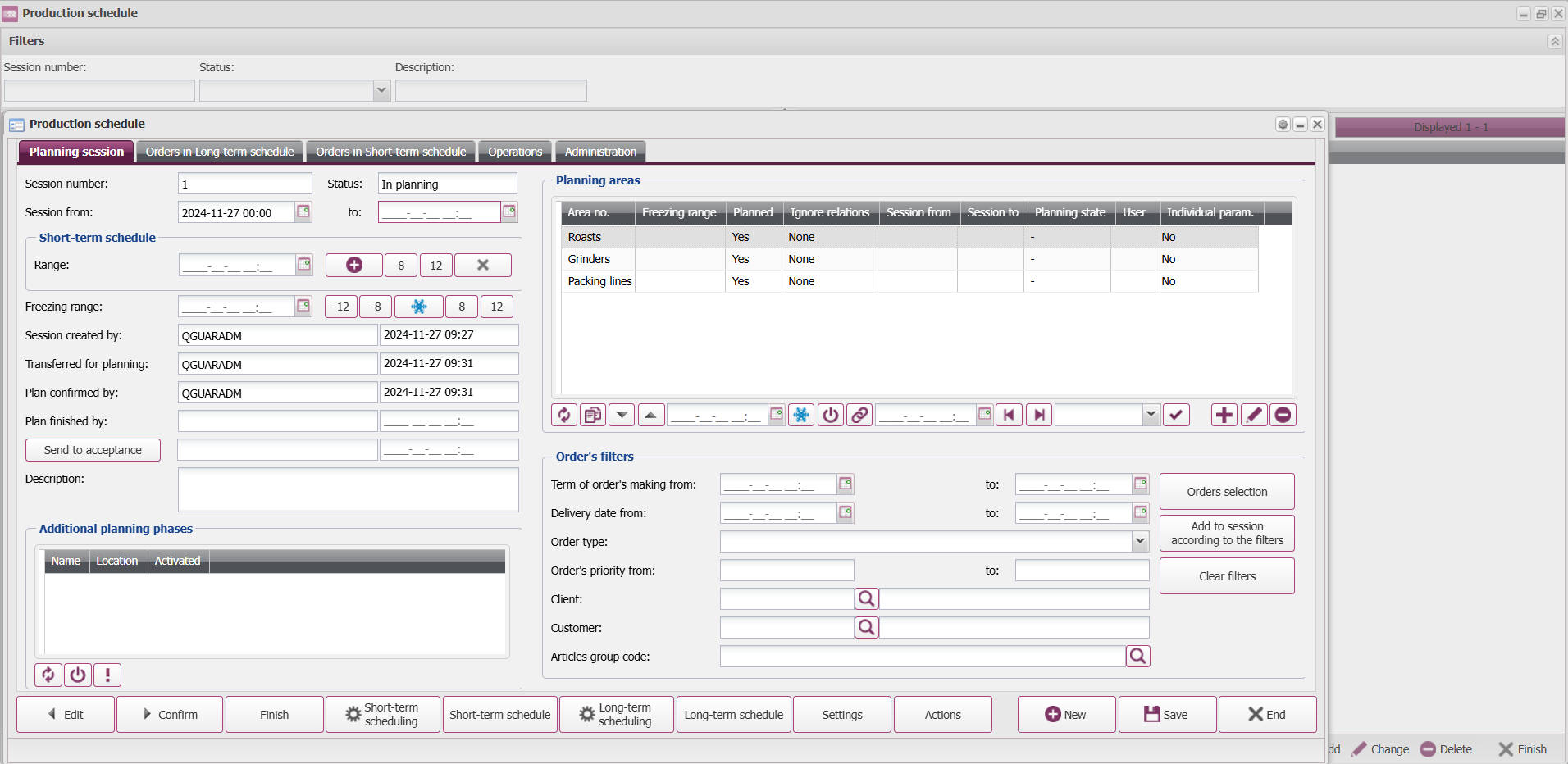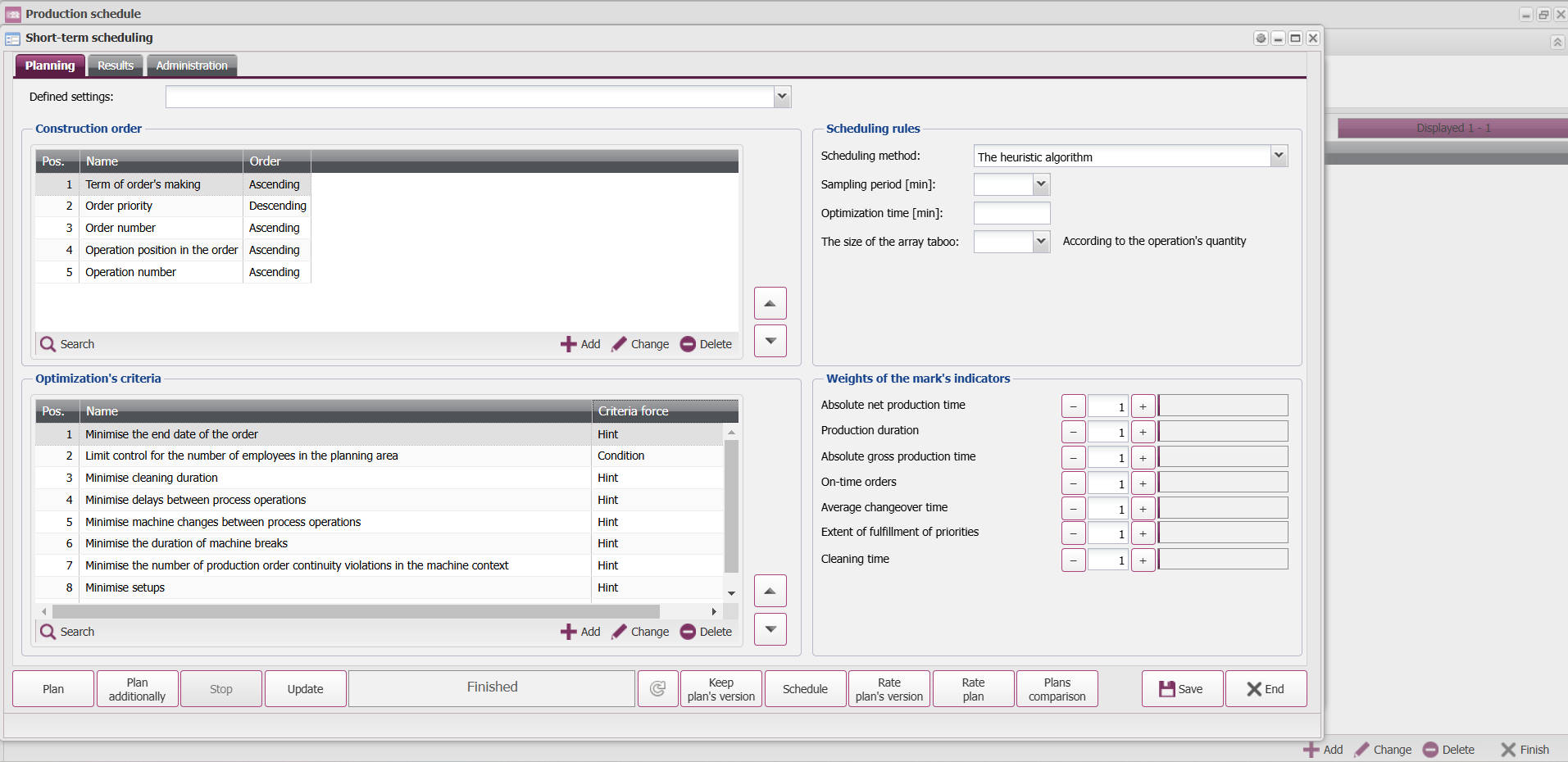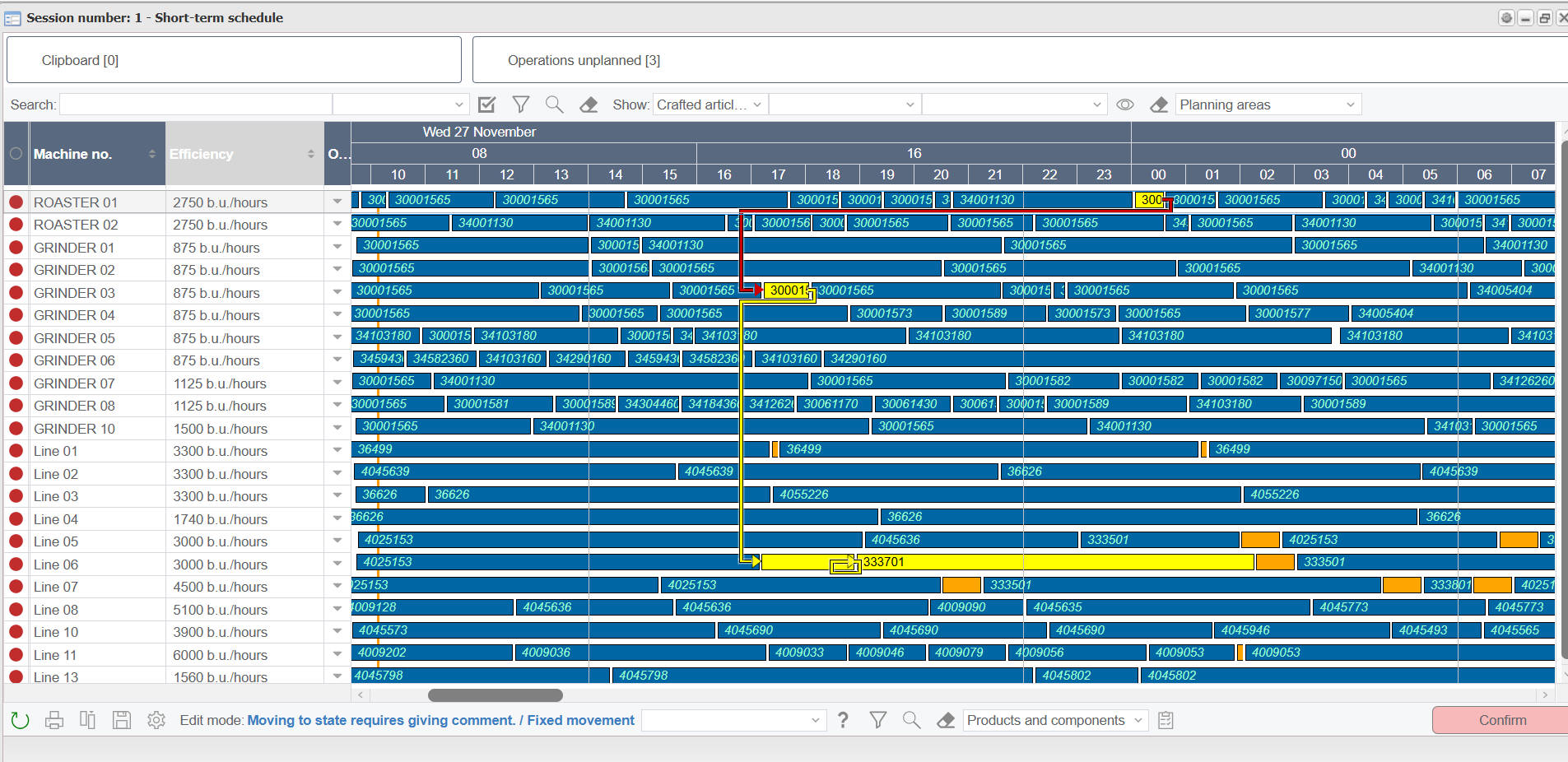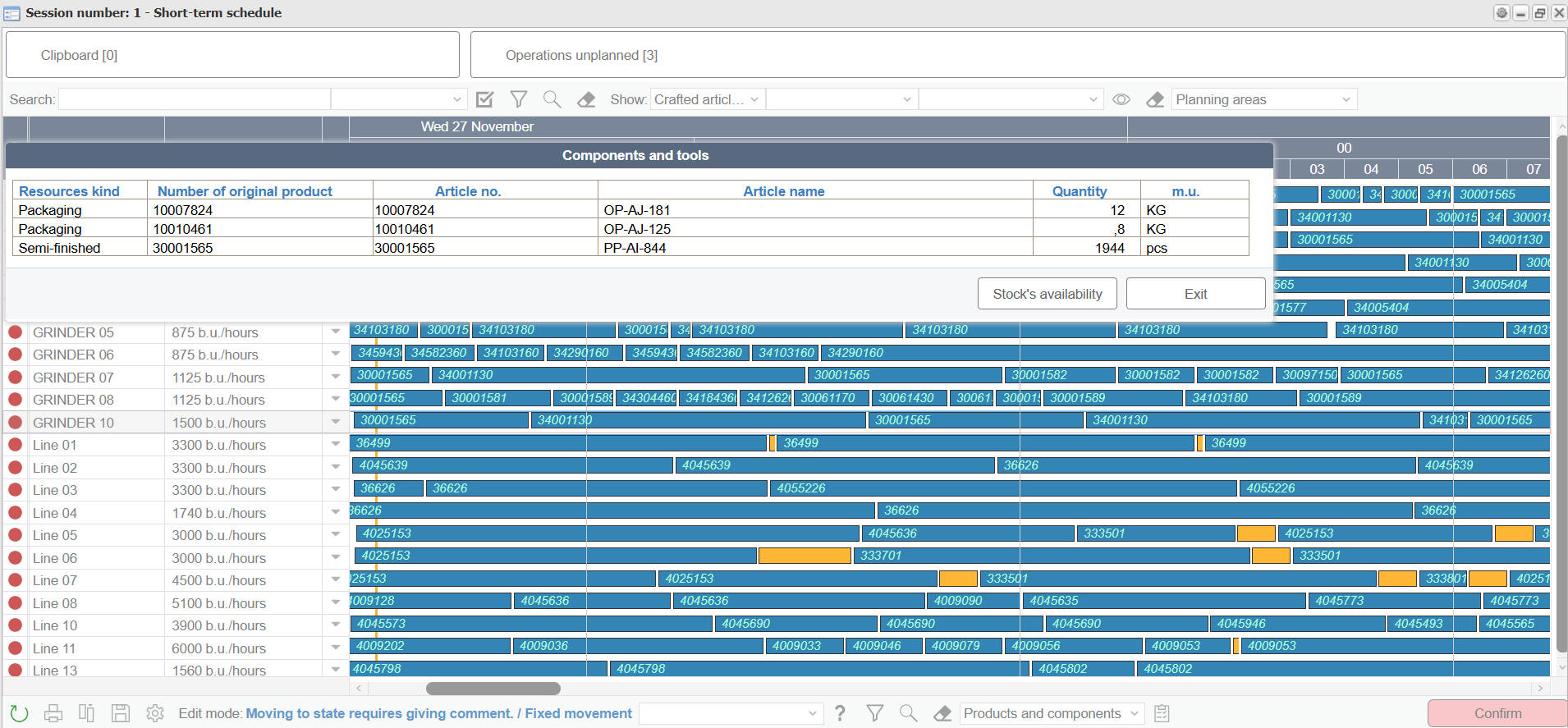
APS Qguar system for production planning
Automatic scheduling of production that takes into account available resources, established priorities and objectives.
- Notifications
- Graphical indicators
Production planning and production order scheduling are complex processes. They require a lot of experience and knowledge, especially in the domain of process optimization and critical path management. The APS System (Advanced Planning & Scheduling) from Qguar is a system designed for automatic and comprehensive production planning and scheduling.
How does the APS-class Qguar system work?
The APS System is equipped with algorithms that allow companies to acquire schedules corresponding to production needs irrespective of their line of trade. APS software allows one to set up schedules according to pre-established criteria, e.g. realization of orders within as short periods as possible, maximum use of the stock of machines or minimized time and number of machine retooling during production.
It is possible to use the system not only to schedule realization of production orders on machines, but also verify accessible production resources, such as raw materials, tools or availability of labour force. The functions of prioritization and weighing particular optimization parameters provide planners with tools to precisely model the planning process.
The APS System supports forward and backward planning models. It is also possible to perform scheduling that takes bottlenecks into account, in order to optimize schedules in this respect. Moreover, the system also allows only selected planning areas to be scheduled and/or displayed, to facilitate user’s work.
Production scheduling algorithms in APS
The following are the main algorithms used by Qguar APS to plan schedules:
- order realization term and priority;
- position of operations within orders, with a hierarchy of attributes;
- the longest time of order realization;
- the shortest time of order realization.
Thanks to implementation of adequate planning settings, it is possible carry out parallel scheduling, order by order, as well as sequential scheduling, stage by state.
Production planning with APS – what are the advantages?
Qguar APS allows production plan to be visualized in graphic form to facilitate process management and location in time at every stage. Schedules take the form of Gantt diagrams that show locations of production operations performed on machines in time. The graphical user interface of our APS system is characterized by simplicity that makes it easy for the user to get acquainted with the system and facilitates its intuitive operation.
The APS system supports production logistics efficiently by providing adequate analytical tools, so that the use may easily acquire required data. The Qguar APS system for production planning is adapted to the needs of various production models. It performs well in supporting both discrete and process manufacturing, big lot production and piece production.
APS and MES systems – cooperation and data exchange
Optional integration of APS with MES-class software enables bidirectional communication between planning and production departments. Thus, planners can trace production flow and react to sudden events – such as failures, downtimes, delays in order realization – that require rescheduling of operations.
Moreover, communication between APS and MES systems allows updated work plans to be delivered without delay to production stations. Our APS software is equipped with predefined reports that allow the user to verify the efficiency of process planning. Thus, the planner may quickly determine:
- the average order realization advance or delay time,
- timeliness of deliveries and work tasks,
- duration of downtimes and machine idleness,
- the degree, to which priorities are followed.
The user may also independently create and configure reports according to individual needs.
Thanks to strict and comprehensive production control, the MES system allows one to increase the effectiveness of labour force (registration of performed tasks) and machines (faster reaction to failures and breakdowns).
Integration with other IT systems
To make the most of APS-class systems, it is often required to integrate them with other IT systems (ERP, MES) that are implemented in a company. This, in turn, requires creation of appropriate data exchange interfaces. An important stage of systems integration consists in determining which events will trigger transmission of messages from one system to the other. The following count among the most popular methods of systems integration:
- File exchange interface – systems can communicate via data files. The files must have a uniform format, e.g. EDI (Electronic Data Interchange), XML (eXtensible Markup Language) or JSON (JavaScript Object Notation) that has been gaining popularity recently. Exchange of data files may be realized directly between applications, or via an API (application programming interface). API is a set of procedures, communication protocols and tools that enable cooperation between different programs.
- Databases – this solution involves implementation of an intermediate database shared by both systems. In such case, integrated systems constantly update the intermediate database. In user-defined time intervals, both programs check, whether the intermediate database contains new information introduced by the other system. If it does, they update their own internal databases.
- Internet services – programs may also exchange data via an internet interface. In such configuration, systems establish communication with a database located in the cloud. This is realized by means of the http protocol. The database in the cloud transmits data in the XML format and the data are recorded in both systems.
- Standard interface – if systems are provided by one supplier, it is highly probable that they will have already been equipped with an interface. Such solution ensures acquisition of high operational stability in a short time. It also allows one to avoid situations, where it is necessary to create the interface from scratch, which involves a number of companies in the works.
Advantages of the APS Qguar program
- Reduction of order realization time and increased productivity;
- Reduction of warehoused stock;
- Reduced number of failures to meet realization deadlines;
- Minimized time and number of retooling operations;
- Maximized use of resources;
- Better quality of client servicing;
- Intuitive operation;
- Cost reduction;
- Possibility of realizing a production schedule without a MES-class system.
Capabilities of the APS Qguar system:
- Scheduling of production orders with accuracy to a single technological process step (operation);
- Control over availability of resources;
- Support of expiry dates of resources in stock;
- Control over availability of tools;
- Quantitative control of labour force availability;
- Control of labour force skills;
- Scheduling according to specific areas;
- Multisession operation;
- Forward and backward scheduling;
- Scheduling that accounts for bottlenecks;
- Support of attributes;
- Realization of orders within the MES-class system or directly within APS.
FAQ – APS
Answers to the frequently asked questions.
You should start thinking about implementing the Qguar APS system when managers and production planning people feel the need for support in advanced scheduling of orders and optimizing order handling scenarios.
The optimization algorithms of Qguar APS enable you to plan orders in a way that ensures their total delivery time is minimized, which in turn increases productivity and reduces unit production costs.
The APS system enables precise scheduling of production orders and supports practical implementation of the “just-in-time” concept through integration with ERP class systems. Thanks to full synchronization of provisioning and production, we are able to reduce stocks and optimize supply processes.
Yes. Choosing Qguar APS as an extension to your functional ERP system opens new opportunities to reduce production and provisioning costs, as well as to improve personnel efficiency. Implementation of the APS system along with MES and ERP class systems results in a significant increase in performance and reduces the need for personnel to provide process supervision and servicing.
Qguar APS has an algorithm that minimizes the average delay, counted from delivery date. This algorithm takes into account priority levels allocated to orders and plans the realization sequence according to the priority level.
There are three ways of presenting a production process in Qguar APS:
- Gantt graph for production tasks in particular positions;
- Gantt graph for realization of production orders in time;
- Production posts loading time graph.
Qguar APS has a functionality that allows several alternative versions of a production plan to be compared. This enables a production planner to make decisions concerning, for example, maximum loading of particular resources.
ERP systems are able to exchange data necessary to illustrate production plans. After optimization, the master system receives the selected production order realization scenario, with starting and completion dates for all operations, allocation of resources and due dates for all resources, materials, semi-products, etc.



